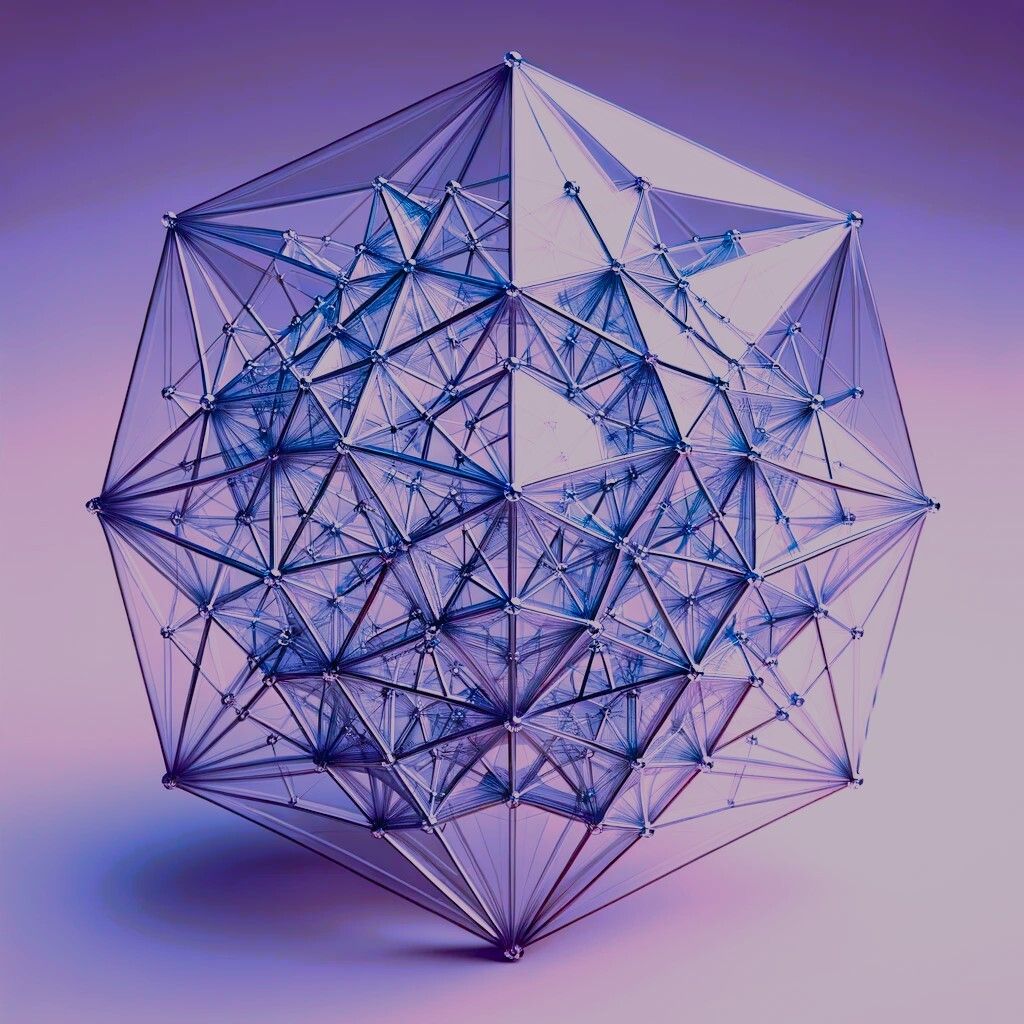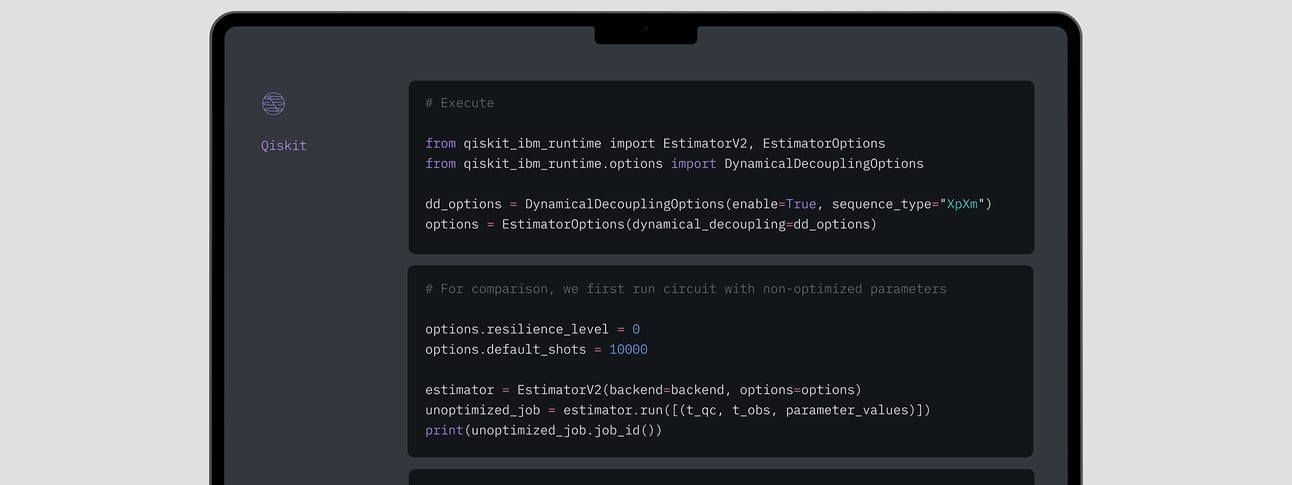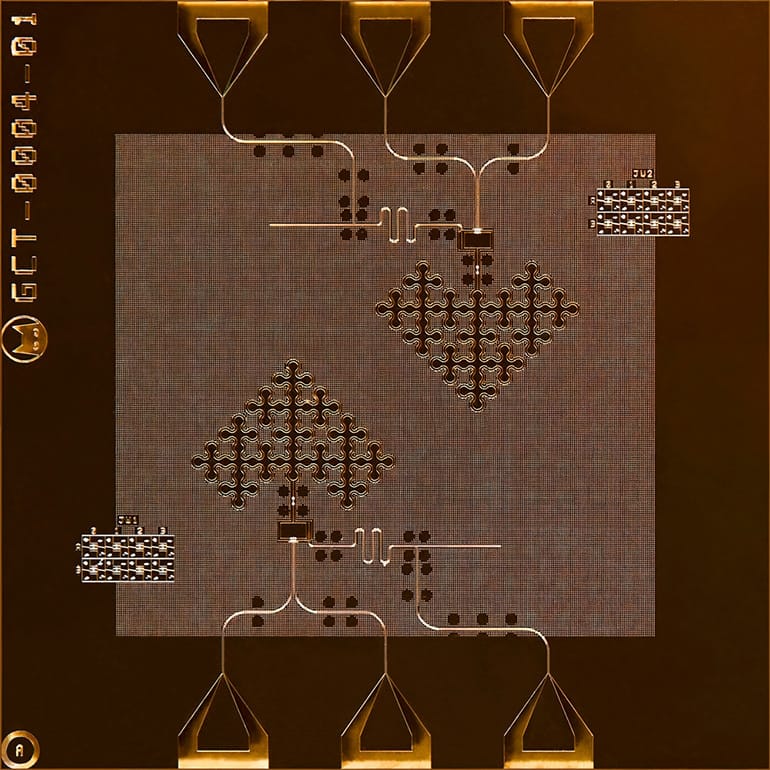- The Daily Qubit
- Posts
- The Daily Qubit
The Daily Qubit
🐈☁️ Cats have arrived to the cloud, our beloved Qiskit gets an update, and 22-mile entanglement. It's a good one.

Welcome to the Quantum Realm.
Enjoy today’s breakdown of news, research, events & jobs within quantum.
I love to hear from you! Send me a message at [email protected] for musings, for fun, or for insight if it so appeals to you.
IN TODAY’S ISSUE:
Are you ready for this?
IBM has expanded its Qiskit quantum software into a comprehensive stack, drastically improving performance and supporting advanced quantum applications.
Q-CTRL is partnering with Hamad Bin Khalifa University for quantum education and research in Qatar.
Alice & Bob introduced the Boson 4 quantum chip to the Google Cloud Marketplace.
A new framework for quantum error correction using quantum spherical codes for bosonic systems.
A study explores the difficulty of recovering input data from the gradients of quantum machine learning models
Plus, Harvard physicists demonstrated the world’s longest quantum internet connection, Fermilab scientists achieve superconducting transmon qubit lifetimes of 0.6ms, IQM and Hewlett Packard collabed hybrid quantum-classical demo at ISC High Performance 2024, and a scalable quantum random number generator
Check out NEW POLLS!
BRIEF BYTES
NEWS FOR THOSE IN A HURRY
Harvard physicists have demonstrated the world's longest quantum internet connection between two quantum memory nodes, spanning a 22-mile fiber loop in the Boston area. This breakthrough uses diamond-based quantum memory to transmit perfectly secure information via entangled photons. This is a significant step towards practical quantum networking.
Scientists at Fermilab's Superconducting Quantum Materials and Systems Center have achieved record superconducting transmon qubit lifetime of 0.6 milliseconds using an encapsulation technique that prevents the formation of lossy oxides on the qubit surface. Longer qubit lifetimes allow for more extended data storage and processing before errors occur. This study highlights the importance of material science in mitigating quantum decoherence.
IQM Quantum Computers and Hewlett Packard Enterprise are showcasing a joint demo of quantum and high-performance computing integration at ISC High Performance 2024. This collaboration demonstrates the power of hybrid quantum-classical solutions for maximum computational power. IQM will also provide a quantum system to be integrated into a supercomputer at Germany's Leibniz Supercomputing Centre.
Researchers have developed a fast quantum random number generator using a photonic integrated circuit embedded on an electronic platform; the generator demonstrates scalable performance suitable for industrial deployment. They manufactured eight boards that process and distribute randomness in real time, maintaining consistent performance during a week of continuous gigahertz operation.
TOP HEADLINES IN NEWS & RESEARCH
NEWS
Tags: CODE RESOURCE
WHAT:
What started as a quantum software development kit has now evolved into a full software stack. The newest release drastically improves performance and is built for the purpose of supporting real-world quantum applications.
Enhancements to the Qiskit stack enables users to optimize quantum circuits 39 times faster and reduce circuit depth and memory usage by significant margins as compared to previous versions.
Organizations such as E.ON, Los Alamos National Laboratory, Brookhaven National Laboratory, Oak Ridge National Laboratory, and Q-CTRL are leveraging Qiskit's new capabilities for various applications in energy, research, and quantum computing advancements.
WHAT’S NEW
i. the stable Qiskit SDK v1.x
ii. AI-powered optimization through the Qiskit Transpiler Service
iii. simplified execution modes in the Qiskit Runtime Service
iv. the Qiskit Code Assistant powered by watsonx-based generative AI models
v. Qiskit Serverless to support quantum-centric supercomputing workloads.
NEWS
Tags: COLLABORATION EDUCATION

The newest global collaboration — we love to see it. (Credit: Q-CTRL)
WHAT:
Q-CTRL has partnered with Hamad Bin Khalifa University’s College of Science and Engineering to advance quantum education and assist in building the next generation quantum workforce in Qatar. The partnership will integrate Q-CTRL’s Black Opal educational platform and Fire Opal performance-management software into the Qatar Center for Quantum Computing’s curriculum and research programs.
WHY:
This collaboration is key example of how fostering academia-industry partnerships can complement educational programs and expand research capabilities in quantum computing. By leveraging Q-CTRL’s advanced quantum software tools, QC2 will be able to prepare students and professionals for the growing quantum technology sector. Plus, the initiative is a strategic investment in building a skilled quantum workforce in Qatar, which will elevate the region in the global quantum technology ecosystem.
NEWS
Tags: CAT QUBITS
WHAT:
Alice & Bob has introduced the Boson 4 quantum chip to the Google Cloud Marketplace which makes it the first publicly available cat-qubit chip. The availability of Boson 4 allows the scientific community to experiment with and verify the benefits of cat qubits.
The chip extends bit-flip error protection to over seven minutes, a four orders of magnitude improvement over existing superconducting qubits, setting a world record. Future iterations will focus on improving phase-flip error protection and enabling multi-qubit operations.
WHY:
This advancement in terms of extended bit-flip error protection moves the industry closer to fault-tolerant quantum computing by requiring significantly fewer qubits for error correction.
RESEARCH
Tags: ERROR CORRECTION
OVERVIEW OF QUANTUM SPHERICAL CODES
BRIEF BYTE: Traditional qubit-based error correction methods don't work well for bosonic systems such as photonic resonators. This study introduces a framework for constructing quantum codes on spheres, extending cat codes into multimode versions that outperform previous designs. Additionally, it recasts concatenations of Calderbank-Shor-Steane codes with cat codes as quantum spherical codes for protection against dephasing noise.
WHY:
This research introduces a framework for quantum error correction using quantum spherical codes. Traditional qubit-based error-correction schemes do not directly apply to bosonic systems like photonic resonators. By addressing this gap, the study is the first step in creating more efficient and effective error correction in continuous-variable quantum platforms.
HOW:
The researchers constructed quantum spherical codes by recasting classical spherical codes into their quantum analogues. They introduced multimode extensions of cat codes, forming polytope-based constellations on a unit sphere. These constellations are characterized by large separation and uniformity which allow them to protect against noise. The framework also includes concatenations of Calderbank-Shor-Steane codes with cat codes to autonomously protect against dephasing noise.
RESULTS:
The new multimode cat codes demonstrated superior performance compared to previous constructions. The study provided examples of these codes, such as the Möbius-Kantor and Hessian codes, which offer enhanced error protection and efficient use of additional dimensions. Numerical simulations showed that even simple multimode constellations outperformed single-mode codes across various loss rates.
Source: Jain, S.P., Iosue, J.T., Barg, A. et al. Quantum spherical codes. Nat. Phys. (2024). https://doi.org/10.1038/s41567-024-02496-y
PREPRINT
Tags: QML
OVERVIEW OF PROSPECTS OF PRIVACY ADVANTAGE IN QUANTUM MACHINE LEARNING
BRIEF BYTE: In the context of the importance of data privacy in machine learning model in collaborative settings, this study explores how easily input data can be recovered from the gradients of quantum machine learning models as well as the properties creating privacy vulnerabilities. The findings guide the design of quantum machine learning models that balance trainability with strong privacy protection.
WHY:
The study addresses the critical issue of data privacy in machine learning models, especially in distributed settings where model gradients are shared among multiple parties for collaborative learning. Given the increasing ability to recover input data from gradients in classical models, the study investigates how challenging it is to recover input data from the gradients of quantum machine learning models. This is particularly relevant as it explores potential quantum privacy advantages.
HOW:
The research focuses on variational quantum circuits and examines the role of the dynamical Lie algebra of the VQC ansatz in determining privacy vulnerabilities. The study establishes a connection between DLA properties and the privacy of VQC models (differentiating between weak privacy breaches and strong privacy breaches). The framework assesses conditions like classical simulatability, overlap with DLA basis, and Fourier frequency characteristics that enable privacy breaches.
RESULTS:
The study found that properties making VQCs trainable, such as a polynomial-sized DLA, also make them vulnerable to privacy breaches. They demonstrated that if a VQC model's DLA dimension scales polynomially with the number of qubits, it is possible to recover snapshots of the input, leading to a weak privacy breach. Additionally, under certain conditions related to the encoding map, a strong privacy breach is also possible.
The findings demonstrate a trade-off between the privacy and trainability of VQC models. The study provides guidelines for designing quantum machine learning models that balance privacy protection with trainability.
Source: Jamie Heredge and Niraj Kumar and Dylan Herman and Shouvanik Chakrabarti and Romina Yalovetzky and Shree Hari Sureshbabu and Marco Pistoia. Prospects of Privacy Advantage in Quantum Machine Learning. arXiv quant-ph. (2024). https://doi.org/10.48550/arXiv.2405.08801
EVENTS
Thursday, May 16 | Report on Quantum Computing in the Global South by the Centre for Quantum and Society
Monday, May 20 | Stanford Responsible Quantum Technology Conference
Thursday, May 23 | QED-C Office Hours — Learn more about a career in QIST w/ Christopher Bishop
Now - May 31 | Register for Google/X-Prize Quantum Challenge
JOBS POSTED WITHIN LAST 24 HOURS
Quantum Futures Quantum Computing Engineer | California (Hybrid)
Quantum Futures Quantum Sensing Physicist | California (Hybrid)
USRA Associate Scientist, Quantum | Mountain View, CA $80.7K - $127.1K
USRA Visiting Scientist, Quantum | San Jose, CA (Hybrid) $92.9K - $146.3K
Argonne National Laboratory Postdoctoral Appointee - Quantum Materials | Lemont IL
UNTIL TOMORROW.
SUPPORT SCIENCE
Waking up before the world to dive into the quantum realm isn't just our job—it's our calling. And we're dreaming big with exclusive content for our community. If our work lights up your day, consider showing some love. Your support unlocks worlds—seen and unseen.
How many qubits was today's newsletter? |
How much information do you want?Did you enjoy today's large selection of news and research? Or, do you prefer a shorter newsletter? |
If we launched a referral program, what type of rewards would you want to see? |
Interested in collaboration or promoting your company, product, job, or event to the quantum computing community? Reach out to us at [email protected]




